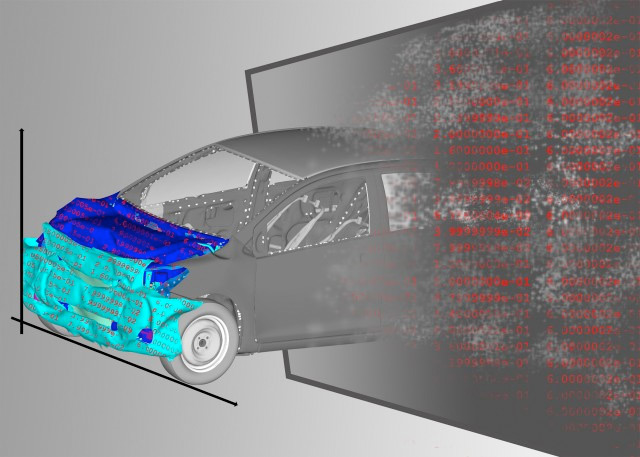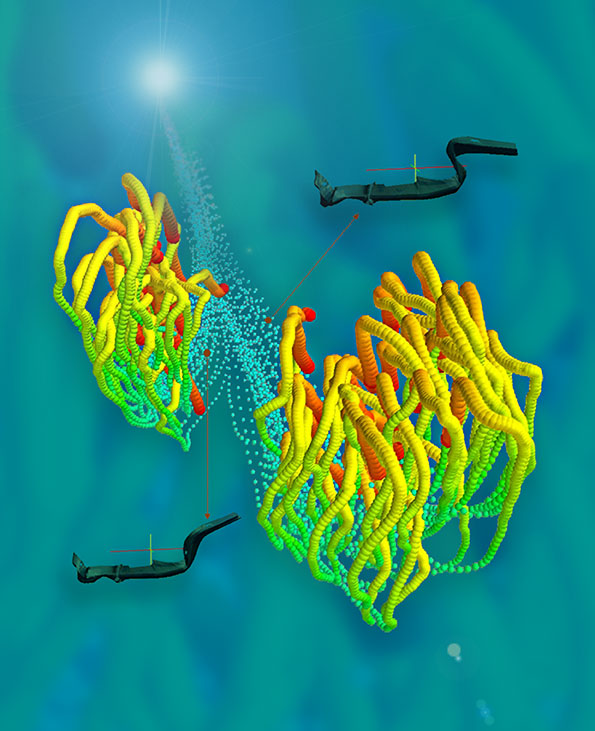Durch diese Reduktion der Datendimension ist eine intuitive, interaktive Visualisierung sehr vieler Simulationen realisierbar. Eine interpretierbare Anordnung in drei Koordinaten bezüglich ausgewählter Elementarzerlegungen zeigt die Unterschiede zwischen den Simulationen, beispielsweise die verschiedenen Geometrieverformungen beim Crash. Als Beispiel betrachten wir ein digitales Finite-Elemente-Modell eines Pick-Up-Trucks, welches wir im BMBF-Big-Data-Projekt VAVID untersucht haben. Simuliert wird ein Frontal-Crash, wobei die Blechdicken von Bauteilen variiert werden. Analysiert werden die Verformungen der Längsträger. Die neue Repräsentation bezüglich der berechneten Elementarzerlegungen ermöglicht es, die verschiedenen Verformungen als Summe elementarer Komponenten kompakt und interpretierbar darzustellen.
By this reduction of the data dimension, an intuitive, interactive visualization of many simulations is realized. An interpretable arrangement in three coordinates with respect to selected elementary decompositions shows the differences between the simulations, for example the different geometrical deformations during a crash. As an example, we consider a digital finite element model of a pick-up truck, which we investigated in the BMBF Big Data project VAVID. A frontal crash is simulated in which the sheet thicknesses of components are varied. The deformations of the longitudinal beams are analyzed. The new representation with respect to the calculated elementary decompositions makes it possible to present the various deformations as the sum of elementary components in a compact and interpretable way.


